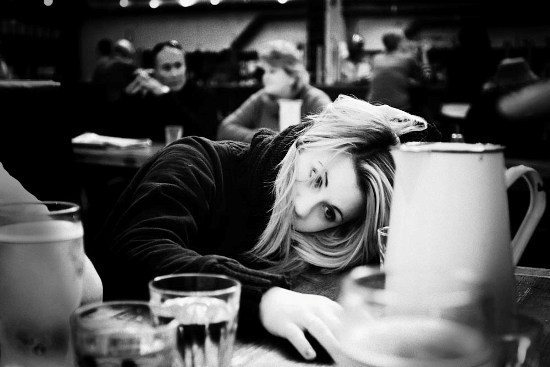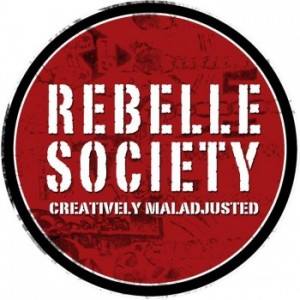Boredom and the Beauty of Its Emptiness.

{source}
I’ll never forget my father’s reaction when he found me reading the magnificent How to Read a Book by Mortimer Adler.
“You’re reading a book about reading a book?” he asked in disbelief. “Diane!” he called to my mother. “Why did we ever take him out of Catholic school?”
So I can forgive anyone for having the same dubious reaction as my father when I say one of the most exciting books I ever read is about boredom. Boredom, Self and Culture by Seán Desmond Healy helped me consolidate thoughts I’d had for years about the paradoxical devastation and beauty of boredom.
Most people trivialize the experience of boredom.
Healy writes, “This supposedly commonplace perception of [boredom] as a virtual unavoidable occupational hazard, disagreeable but harmless, possessed even as it might be of redeeming educational value inasmuch as it prepares its victims for the greater boredom to come — a kind of educational vaccine stimulating the production of characterological antibodies to contain future onslaughts.”
If only it were that benign. In reality, boredom is usually corrosive and destructive to the human personality. It is a major factor in the self-defeating behavior patterns that cause us all so much pain.
And yet, within the experience of boredom resides the potential for self-knowledge leading to deep fulfillment.
Healy makes the distinction between simple boredom and hyper-boredom. Simple boredom comes from tedious activity, a reaction to a monotonous irritant. Hyper-boredom is a more serious deep-seated agony, rooted in a perception of inner emptiness.
Simple boredom is a response to an external something. Hyper-boredom is a response to an internal nothing. It is this hyper-boredom, the true subject of Healy’s book, which I take very seriously.
The experience of hyper-boredom is manifestly intolerable. Proof of this is found in how quickly, almost desperately, we seek to escape it.
We feel bored, that is, empty, and almost instantaneously we take evasive action, doing just about anything to divert ourselves: text someone, use the computer, turn on music, eat, drink or smoke. Even fiddling with a pen will do.
Almost any diverting activity is preferred to the perception of interior emptiness we euphemistically call boredom. The more keenly felt, the more assiduously avoided. Since hyper-boredom is so easily appeased without being truly remedied, we fail to recognize its controlling power.
As Healy notes, the common denominator of all hyper-boredom is the loss of personal meaning. The idea of life without meaningful purpose panics the soul. Many people are reluctant to examine this in a personal way; they may do so only with detached philosophic interest.
Or they may avoid the subject altogether because personalizing the question makes it terrifying. If I sense emptiness in me, what does that say about who I am?
The creeping specter of our own meaninglessness, suggested by hyper-boredom, is uncomfortable enough that we regularly blunt it through agreeable distractions. This might be a reasonable solution for simple boredom; simply fend off tedium with novelty.
But the experience of hyper-boredom is deeper, chronic and not dependent on external factors.
Hyper-boredom is largely metaphysical and experienced apart from sensory events. Seeking better distractions, more inventive and original experiences, may be sufficient to reduce simple boredom, but only expands our capacity for aching hyper-boredom.
This sheds light on why the pursuit of pleasure for pleasure’s sake invariably results in boredom. We want the pleasure that thrills to thrill everlasting.
But our response to the pleasure adapts, tolerance increases, what was fresh and exciting becomes ordinary; the thrill is gone and we are left even more susceptible to hyper-boredom than before we started.
If you drink, you may eventually require four drinks to accomplish the glow once produced by two drinks. This should concern you, not for fear of alcoholism, but for fear of your inner life becoming more vulnerable to hyper-boredom.
The redemptive potential of boredom exists in the possibility that the discomfort will drive us to devote honest attention to our souls’ true need: its thirst for meaning, not distraction. What does my experience of emptiness reveal about my fears and my needs?
Our inner unrest is a portal leading to answers essential for self-definition and more.
Dante’s Inferno contains a fascinating scene where the lost souls in Hell rush to their judgment, desiring the very thing they feared.
Desiring what we fear may sound illogical and bizarre, but if we are to lay hold of Beauty begat of Boredom, we must confront the same mesmerizing inclination in our own souls to rush to the usual diversions that perpetuate the hellish hyper-boredom we fear.
Avoiding the confrontation with one’s own emptiness diminishes clarity about one’s true self, and leads to a longer and more painful struggle in the end.
For the artist or the writer, the experience of boredom is opportunity knocking: a portal and a guide to revelation, insight and creativity. When distractions wither away, one absorbs the initial crush of nothingness. Intense resistance is expected.
What is being resisted, the perception of nothing? Remind oneself of the obvious: nothing is harmless. It takes bold thinking to allay that anxiety, and then patience to wait until something emerges from the nothing, as it will in time.
This is the struggle, resisting the urge to flee to the pleasant distraction, the common distraction, and the novel distraction. As we progress, we learn how enfeebling are the distractions and how invigorating this manner of self-discovery can be.
The perception of inner emptiness, what Seán Desmond Healy calls hyper-boredom, is not a nuisance but an invitation to a radical change in one’s approach to life.
This inquisitive attitude towards boredom is counter-intuitive, ironic and yes, exciting.
***
Jerry Januszewski is a licensed clinical alcohol and drug counselor at St. John’s College in Annapolis, Maryland. He received his M.A. from St. John’s College, an M.S. from Boston University, and a B.S. from Cornell University. He took his position at St. John’s College after 15 years as an addiction treatment counselor in Annapolis and Washington DC. Mr. Januszewski was the associate producer of the award-winning documentary ‘Pip and Zastrow: An American Friendship’, which told the story of two men who crossed racial boundaries in Annapolis, Maryland during the segregated 1950s. He is a proponent of independent, slow travel, having completed a lecture tour of substance abuse treatment facilities in southern India in 2007. Some of his travel writing appears at Recovery Talks. He can also be contacted via email.
***
{Join us on Facebook, Twitter, Instagram & Pinterest}

